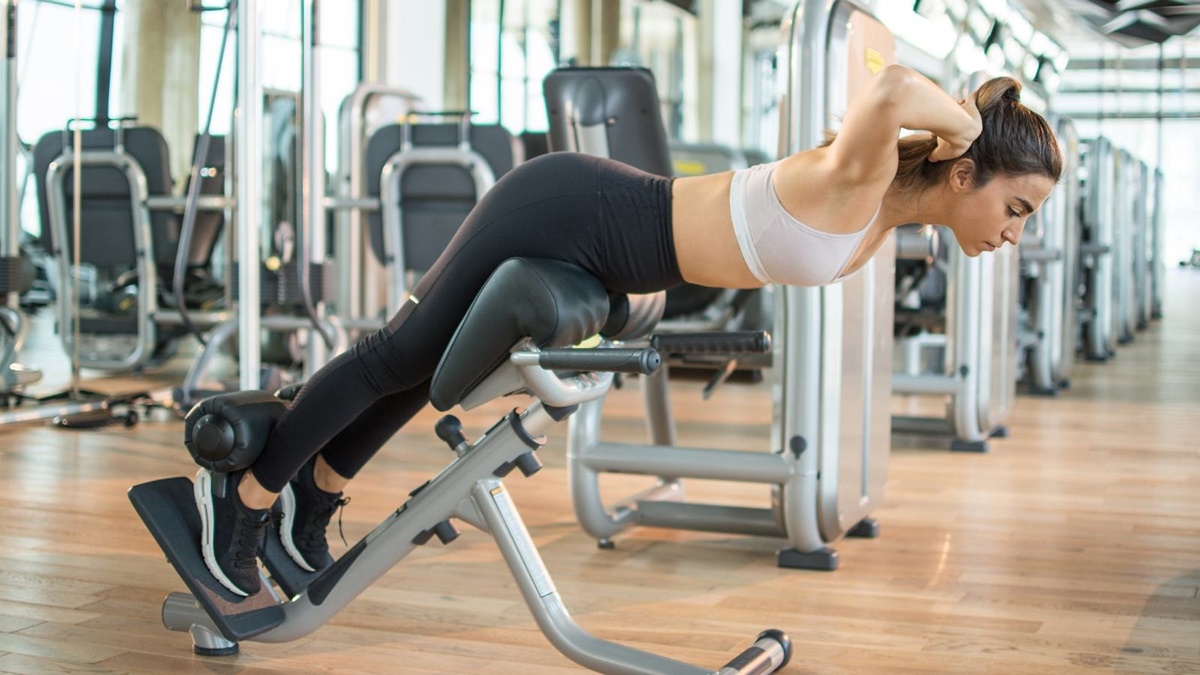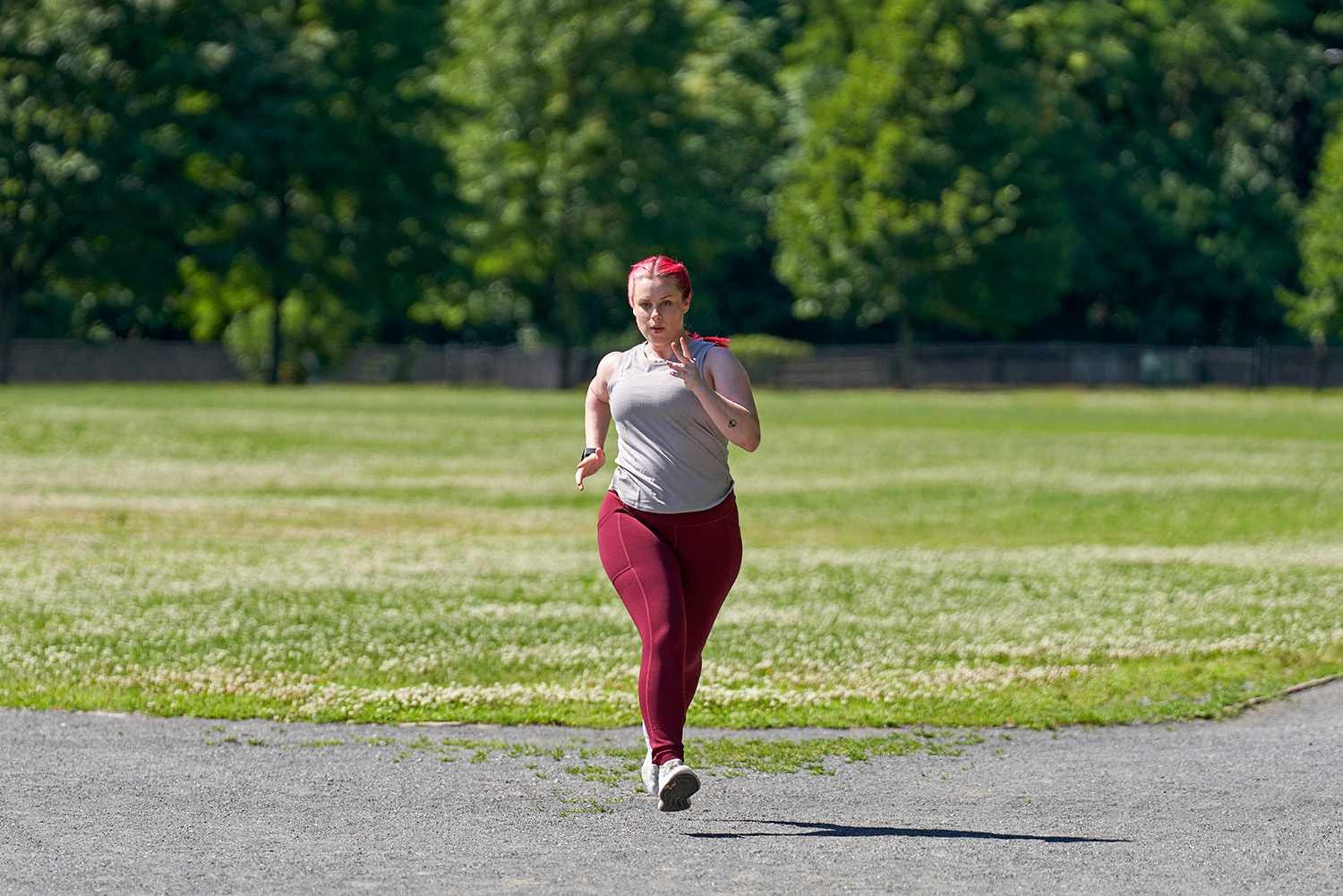Home>Misc>Featured>How To Lose Belly Fat With High Intensity Interval Training


Featured
How To Lose Belly Fat With High Intensity Interval Training
Modified: January 2, 2024
Discover how to lose belly fat with high intensity interval training in this featured guide. Get actionable tips and start seeing results today!
Introduction
Welcome to the world of High Intensity Interval Training (HIIT), the ultimate solution for those looking to shed stubborn belly fat. If you’ve been struggling to achieve that coveted flat stomach, HIIT might just be the secret weapon you’ve been searching for.
HIIT is a type of workout that combines short bursts of intense exercise with periods of rest or lower intensity. It is highly effective in boosting metabolism, burning calories, and promoting weight loss, particularly in the abdominal area where fat tends to accumulate.
While traditional steady-state cardio exercises like jogging or cycling can help you burn calories, they are not as efficient in targeting belly fat specifically. HIIT, on the other hand, has been scientifically proven to be more effective in reducing abdominal fat by stimulating the release of fatty acids and increasing post-exercise metabolic rate.
In this article, we will explore the benefits of high intensity interval training and how it can specifically help you lose belly fat. We will also provide you with a sample HIIT workout routine and some tips to ensure you get the most out of your training sessions.
So, if you’re ready to say goodbye to those love handles and hello to a toned midsection, let’s dive into the world of HIIT and discover how it can transform your fitness journey!
What is High Intensity Interval Training (HIIT)?
High Intensity Interval Training (HIIT) is a type of cardiovascular exercise that involves alternating between short, intense bursts of exercise and brief recovery periods. This method of training challenges both your aerobic and anaerobic energy systems, pushing your body to its limits and maximizing calorie burn in a short amount of time.
Typically, a HIIT workout consists of a series of exercises performed at near-maximum effort for a set time, followed by a brief rest or active recovery period. The high-intensity intervals can range anywhere from 20 seconds to 2 minutes, depending on your fitness level and goals.
What sets HIIT apart from traditional cardio exercises is the level of intensity. Rather than maintaining a steady pace for an extended duration, HIIT workouts require you to exert yourself to the maximum during the intervals, pushing your heart rate to its peak. This intense effort triggers a phenomenon called excess post-exercise oxygen consumption (EPOC), also known as the afterburn effect.
During the high-intensity intervals, your body relies heavily on anaerobic metabolism to meet the increased demand for energy. This leads to the production of lactic acid, which causes the familiar burning sensation in your muscles. However, during the recovery periods, your body utilizes oxygen to clear the lactic acid and restore your energy stores, resulting in a significant calorie burn even after your workout.
One of the key benefits of HIIT is that it can be customized to suit different fitness levels and exercise preferences. You can choose a variety of exercises, such as sprints, burpees, jump squats, or kettlebell swings, and adjust the duration and intensity to create a workout that challenges you and keeps you engaged.
In the next section, we will explore the numerous benefits of incorporating HIIT into your fitness routine and why it is particularly effective in targeting belly fat.
Benefits of High Intensity Interval Training (HIIT)
High Intensity Interval Training (HIIT) offers a multitude of benefits beyond just burning calories. Let’s take a closer look at some of the key advantages of incorporating HIIT into your fitness routine:
- Efficient Time-Saver: HIIT workouts are known for their efficiency. Due to the high intensity and short duration of the intervals, you can achieve the same, if not greater, cardiovascular benefits as a longer, steady-state cardio session in a fraction of the time. This makes HIIT perfect for those with busy schedules who want to maximize their workouts in a limited amount of time.
- Increased Fat Burning: HIIT is highly effective in burning fat, especially stubborn belly fat. The intense bursts of exercise and elevated heart rate during the intervals result in a significant increase in caloric expenditure both during and after the workout. Studies have shown that HIIT can lead to greater total fat loss and a reduction in waist circumference compared to other types of exercise.
- Preservation of Lean Muscle: Unlike traditional cardio workouts, which may cause muscle loss along with fat loss, HIIT helps preserve lean muscle mass. The intense nature of HIIT stimulates muscle growth and maintenance, ensuring that you not only burn fat but also have a toned and sculpted physique.
- Improved Cardiovascular Fitness: HIIT pushes your cardiovascular system to the limits, increasing your heart rate and improving your cardiovascular fitness. Over time, this can lead to a stronger heart, improved oxygen utilization, and enhanced endurance.
- Metabolic Boost: The intensity of HIIT triggers a metabolic response that can elevate your metabolic rate for hours after your workout. This means you continue to burn calories even when you’re at rest. HIIT has been shown to increase the production of growth hormone, which helps maintain muscle mass and stimulate fat burning.
These are just a few of the many benefits that HIIT has to offer. In the next section, we will delve into how HIIT specifically helps in losing belly fat and sculpting a toned midsection.
How High Intensity Interval Training (HIIT) Helps in Losing Belly Fat
High Intensity Interval Training (HIIT) is particularly effective in targeting and reducing belly fat due to its unique physiological effects on the body. Here’s how HIIT can help you achieve a flatter stomach:
- Increased Caloric Expenditure: The intense nature of HIIT workouts leads to a higher caloric burn compared to steady-state cardio exercises. During the high-intensity intervals, your body utilizes a greater amount of energy to perform the intense movements, resulting in increased calorie expenditure. This energy deficit is crucial for fat loss, including the reduction of belly fat.
- Elevated Metabolic Rate: HIIT workouts stimulate your metabolism to work at a higher rate during and after the training session. This increase in metabolic rate is caused by various factors, including the afterburn effect and the metabolic demands placed on your body during the high-intensity intervals. The elevated metabolism means that you continue to burn calories even after your workout is complete, aiding in fat loss, including the reduction of abdominal fat.
- Release of Growth Hormone: HIIT triggers the release of growth hormone (GH), which plays a vital role in regulating fat metabolism. The increased GH levels during and after HIIT workouts help mobilize fat stores and enhance lipolysis, the breakdown of fat cells. This mechanism is particularly beneficial for targeting stubborn belly fat.
- Decreased Insulin Resistance: HIIT has been shown to improve insulin sensitivity and reduce insulin resistance. This is crucial for preventing the accumulation of visceral fat, which is found deep within the abdominal cavity and surrounds vital organs. By improving insulin sensitivity, HIIT helps prevent excess belly fat storage and promotes overall fat loss.
- Preservation of Lean Muscle Mass: HIIT workouts promote the preservation of lean muscle mass, even during periods of calorie restriction. This is important because muscle burns more calories at rest than fat. By preserving and building lean muscle, HIIT helps increase your overall metabolic rate, allowing you to burn more calories throughout the day, including from belly fat.
By incorporating HIIT into your fitness routine, you can tap into these physiological mechanisms that specifically target belly fat and accelerate your progress towards a flatter stomach. Now that we’ve explored how HIIT helps in losing belly fat, let’s move on to the next section, which covers how to get started with high intensity interval training.
Getting Started with High Intensity Interval Training (HIIT)
If you’re ready to embark on your High Intensity Interval Training (HIIT) journey to burn belly fat and improve your overall fitness, here are some essential tips to help you get started:
- Consult with a Physician: Before beginning any new exercise program, it is important to consult with your healthcare provider, especially if you have any pre-existing medical conditions or injuries. They can provide guidance and ensure that HIIT is safe and appropriate for your individual needs.
- Choose the Right HIIT Workout: HIIT offers a wide range of exercises and workouts, so it’s important to choose one that suits your preferences and fitness level. Whether it’s bodyweight exercises, sprinting, cycling, or HIIT classes, find an option that you enjoy and that challenges you.
- Warm Up Properly: Before diving into the high-intensity intervals, take the time to warm up your muscles and prepare your body for the intense workout. This can include dynamic stretches, light cardio exercises, and mobility drills to increase blood flow and flexibility.
- Start Slowly: If you’re new to HIIT or haven’t exercised regularly, it’s important to start slowly and gradually increase the intensity and duration of your workouts. This will allow your body to adapt and minimize the risk of injury.
- Interval Structure: A typical HIIT workout consists of alternating periods of high-intensity exercise and recovery. Start with shorter intervals, such as 20 seconds of intense exercise followed by 40 seconds of rest, and adjust the duration as you progress. Aim for a total workout duration of 20-30 minutes.
- Focus on Form and Technique: Proper form and technique are crucial in HIIT to minimize the risk of injury and maximize the effectiveness of each exercise. Pay attention to your posture, engage your core, and maintain proper alignment throughout each movement.
- Listen to Your Body: HIIT is intense and challenging, so it’s important to listen to your body and modify exercises or take breaks when necessary. Push yourself, but also know your limits and avoid overexertion.
- Stay Consistent: Consistency is key when it comes to seeing results with HIIT. Aim for at least three HIIT workouts per week, but listen to your body and allow for adequate rest and recovery between sessions.
- Track and Progress: Keep a record of your workouts, including the exercises, duration, and intensity. This will help you track your progress and make adjustments as needed. Over time, aim to increase the intensity or duration of your intervals to continually challenge your body.
Now that you have the essential tips to get started with HIIT, let’s move on to the next section, where we’ll provide you with a sample HIIT workout routine to target belly fat.
Sample High Intensity Interval Training (HIIT) Workout Routine
Here’s a sample High Intensity Interval Training (HIIT) workout routine designed to help you target belly fat and boost your fitness:
Warm-Up:
Start with a 5-10 minute warm-up consisting of light cardio exercises such as jogging, jumping jacks, or cycling. This will increase your heart rate, warm up your muscles, and prepare your body for the intense workout ahead.
Interval Structure:
Perform each exercise for the designated time, followed by a short recovery period. Repeat the circuit 3-4 times with 60-90 seconds of rest between circuits.
- Exercise 1: Burpees
Perform burpees for 30 seconds, giving it your all. Rest for 20 seconds before moving on to the next exercise. - Exercise 2: Mountain Climbers
Get into a high plank position and alternate bringing your knees toward your chest in a running motion for 30 seconds. Rest for 20 seconds. - Exercise 3: Jump Squats
Stand with your feet shoulder-width apart, lower into a squat position, then explosively jump up, extending your arms overhead. Land softly and immediately go into the next jump squat. Perform for 30 seconds, then rest for 20 seconds. - Exercise 4: Plank Jacks
Start in a high plank position, then jump your feet out wide and back together (similar to a jumping jack motion) for 30 seconds. Take a 20-second rest. - Exercise 5: High Knees
Stand with your feet hip-width apart and run in place, driving your knees up toward your chest as fast as possible for 30 seconds. Rest for 20 seconds. - Exercise 6: Bicycle Crunches
Lie on your back, hands behind your head, and alternate bringing your opposite elbow to your knee while extending the other leg straight out for 30 seconds. Rest for 20 seconds. - Exercise 7: Rest
Take a 2-minute rest before starting the circuit again.
Cool-Down:
After completing the full circuit, cool down with 5-10 minutes of gentle stretching and deep breathing exercises to help your body recover and reduce muscle soreness.
Remember, this is just a sample workout routine, and you can modify it to suit your fitness level and preferences. Feel free to substitute exercises or adjust the duration of the intervals as needed. The key is to maintain high intensity during the work intervals and challenge yourself with each workout.
Now that you have a sample HIIT workout routine, let’s move on to the next section, where we’ll provide you with some tips for effective high intensity interval training.
Tips for Effective High Intensity Interval Training (HIIT)
High Intensity Interval Training (HIIT) requires proper technique and mindful execution to maximize its effectiveness. Here are some tips to ensure you get the most out of your HIIT sessions:
- Focus on Quality Over Quantity: HIIT is all about intensity, not duration. Instead of trying to complete as many repetitions as possible, focus on performing each exercise with proper form and maximum effort. Quality repetitions will yield better results than rushed, sloppy movements.
- Listen to Your Body: Pay attention to your body’s signals during the workout. Push yourself, but also be mindful of any pain or discomfort. If something doesn’t feel right, modify the exercise or take a break. It’s better to be safe than sorry.
- Vary Your Exercises: Keep your workouts exciting and prevent plateaus by incorporating a variety of exercises. This not only keeps you engaged, but it also challenges different muscle groups and prevents overuse injuries.
- Progress Gradually: As you become fitter and stronger, gradually increase the intensity or duration of your intervals. This progressive overload will help you continually challenge your body and keep making progress.
- Use Proper Breathing Technique: Coordinate your breathing with the movements during your HIIT workout. Take deep breaths in through your nose during the rest periods, and exhale forcefully through your mouth during the high-intensity intervals to oxygenate your muscles.
- Stay Hydrated: HIIT is intense and will make you sweat, so make sure to stay well-hydrated before, during, and after your workout. Drink water throughout the day and have a water bottle nearby during your HIIT sessions.
- Track Your Progress: Keep a record of your workouts, including the exercises, durations, and any modifications or progressions. This will help you track your improvements and motivate you to push harder in each session.
- Allow for Rest and Recovery: Rest and recovery are essential for the effectiveness of HIIT. Take at least one day of rest between HIIT sessions to allow your body to repair and rebuild. Adequate sleep and proper nutrition are also crucial for recovery.
- Combine HIIT with Other Forms of Exercise: While HIIT is excellent for burning fat and improving cardiovascular fitness, don’t forget to incorporate strength training, flexibility exercises, and other forms of physical activity into your overall fitness routine for well-rounded health benefits.
By following these tips, you can maximize the effectiveness of your High Intensity Interval Training (HIIT) workouts and achieve your fitness goals more efficiently. Now that you have a better understanding of HIIT tips, let’s move on to the next section where we’ll discuss some precautions and considerations to keep in mind when performing HIIT.
Precautions and Considerations for High Intensity Interval Training (HIIT)
While High Intensity Interval Training (HIIT) is an effective and efficient workout method, it is important to approach it with caution and keep the following precautions and considerations in mind:
- Consult with a Healthcare Provider: If you have any underlying medical conditions or are new to exercise, it is advisable to consult with a healthcare provider before starting HIIT. They can assess your fitness level and provide guidance on whether HIIT is suitable for you.
- Warm-Up and Cool Down: Skipping or rushing through the warm-up and cool down can increase the risk of injury. Take the time to properly warm up your muscles before each HIIT session and cool down with stretches and breathing exercises afterwards.
- Gradual Progression: Avoid pushing yourself too hard, too soon. Gradually increase the intensity and duration of your HIIT workouts to allow your body to adapt and reduce the risk of overuse injuries or burnout.
- Proper Form: Performing exercises with improper form can increase the risk of injury. Focus on maintaining correct posture, engaging the appropriate muscles, and using controlled movements throughout each exercise.
- Listen to Your Body: Pay attention to any discomfort, pain, or unusual sensations during your HIIT workouts. If something feels wrong, modify the exercise or take a break. Pushing through pain can lead to injuries.
- Recovery Days: Allow for adequate rest and recovery between HIIT sessions. Your body needs time to repair and rebuild muscle tissue. Overtraining can hinder your progress and increase the risk of injury.
- Hydration: HIIT workouts can be intense and lead to increased sweating. Stay well-hydrated by drinking water before, during, and after your sessions to avoid dehydration.
- Breathing: Focus on proper breathing technique, as holding your breath during intense exercises can cause unnecessary strain and fatigue. Breathe deeply and exhale during the most challenging parts of each movement.
- Individual Fitness Level: HIIT workouts can be adjusted to suit different fitness levels. If you’re a beginner, start with lower-intensity exercises and shorter intervals. As your fitness improves, gradually increase the intensity and duration.
- Overtraining: Be mindful of the signs of overtraining, such as chronic fatigue, decreased performance, persistent muscle soreness, and mood disturbances. If you experience these symptoms, take a break and allow your body to recover.
By following these precautions and considerations, you can minimize the risk of injuries and enjoy the benefits of High Intensity Interval Training (HIIT) safely and effectively. Now that you are aware of the precautions, let’s conclude this article with a summary and final thoughts on HIIT.
Conclusion
High Intensity Interval Training (HIIT) is a powerful tool in the battle against belly fat and achieving your fitness goals. It offers numerous benefits, including increased calorie burn, improved cardiovascular fitness, and the ability to specifically target stubborn abdominal fat. By incorporating HIIT into your fitness routine, you can optimize your workouts and see significant results in a shorter amount of time.
Remember to start gradually, choose exercises that you enjoy, and focus on proper form and technique. Listen to your body and make adjustments as needed to avoid injury. Stay consistent with your HIIT workouts, but also allow for adequate rest and recovery to avoid overtraining.
It’s important to note that while HIIT is effective, it is not a magic solution. Sustainable fat loss and overall health require a well-rounded approach that includes a nutritious diet, regular physical activity, and a balanced lifestyle. HIIT can be a valuable component of this approach, helping you to burn calories, reduce belly fat, and improve your overall fitness level.
So, if you’re ready to challenge yourself, maximize your workouts, and say goodbye to that stubborn belly fat, give HIIT a try! Consult with a healthcare provider if needed, choose a workout routine that suits your fitness level, and commit to consistency. With dedication and effort, you can achieve the toned midsection you’ve always wanted.
Now, go ahead and embrace the power of High Intensity Interval Training to transform your body and elevate your fitness journey. Get ready to experience the incredible benefits of HIIT and enjoy the feeling of a stronger, leaner, and more confident you!









